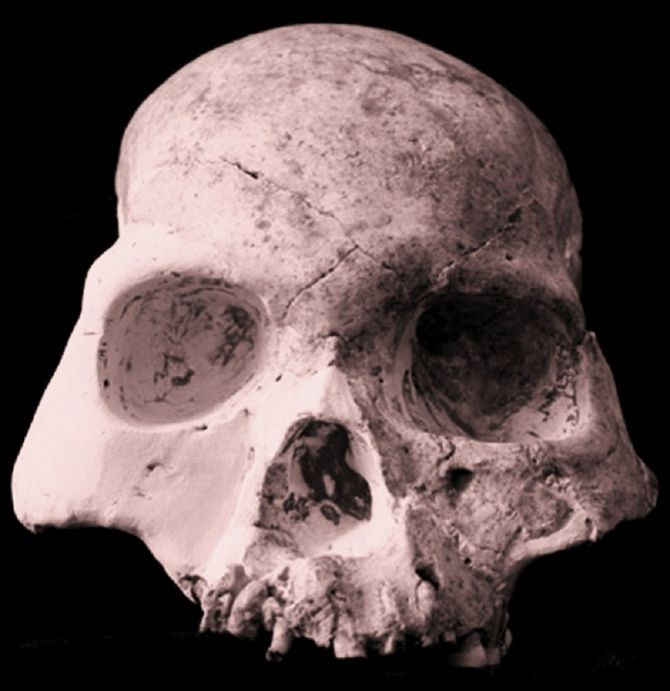Mystery Fossils Unearthed in China May Belong to a New Human Species

Scientists believe the mysterious fossils uncovered in two caves located in southwest China may be a previously unknown type of human possessing an extremely unusual mixture of archaic and modern human features.
The bones representing at least five individuals are only between 11,500 and 14,500 years old, the youngest of their kind to ever be found in mainland East Asia, meaning that these distinct Homo species that evolved in Asia may have lived alongside modern humans when China’s earliest farmers were first appearing, according to a detailed analysis published in the PLoS One journal.
"These new fossils might be of a previously unknown species, one that survived until the very end of the Ice Age around 11,000 years ago," said one of the lead researchers Professor Darren Curnoe of the University of New South Wales, in a statement released on Wednesday.
The remains of some of the individuals scientists have dubbed the “Red Deer Cave” people were found in Maludong or Red Deer Cave, close to the city of Mengzi in Yunnan Province, and the other remains were discovered in the neighboring Guangxi Province at Longlin.
Scientists believe that the fossils found in the two different locations are from the same species because the skulls and both are very similar to each other, and while the fossil specimens were first unearthed in 1989, they were not closely examined till 2008.
Scientists called the species "Red Deer Cave People," because it is believed that those individuals had cooked extinct red deer in the cave they were found where was evidence that the unidentified people had cooked large deer where they lived.
A more detailed analysis of the fossils is required before scientists can they can be classified as a new human lineage.
"One of the reasons for that is that in the science of human evolution or paleoanthropology, we presently don't have a generally agreed, biological definition for our own species (Homo sapiens), believe it or not. And so this is a highly contentious area," Curnoe told BBC News.
The Red Deer Cave people had distinct features that were quite different from a fully modern human, the researchers said, and the features are more like a mix of archaic and modern characteristics.
The homo species were described as having rounded brain cases with prominent brow ridges and thick skull bones. Their faces were short and flat underneath the brain and they had broad eye sockets and noses. They had large molar teeth and jaws that jutted forward, but lacked chins found in modern humans.
Computed Tomography X-ray scans of the species’ brains revealed that they had modern frontal lobes but primitively short parietal lobes located at the top of the brain, associated with sensory data.
The researchers speculated two possible scenarios of the origin of the Red Deer Cave population. They believe that the fossils represent either a very early migration of a primitive-looking Homo sapiens that lived separately from the rest of the species in Asia before dying out, or that they evolved alongside modern humans until fairly recently.
A third possibility currently being suggested by scientists not involved with the research is that the Red Deer Cave people could be hybrids.
"It's possible these were modern humans who inter-mixed or bred with archaic humans that were around at the time," explained Dr. Isabelle De Groote, a paleoanthropologists from London's Natural History Museum, according to BBC. "The other option is that they evolved these more primitive features independently because of genetic drift or isolation, or in a response to an environmental pressure such as climate,"
Scientists are now attempting to extract DNA from the remains, which could provide more information about interbreeding.
Up until recently, scientific attention on human origins has largely focused in places like Europe and Africa, and research has been hampered by a lack of fossils in Asian and poor understanding of the age of the ones already found.
No other fossils younger than 100,000 years old have been found in mainland East Asia that resembled Homo sapiens, and scientists had once thought that the vast Asian landmass was a region that had been empty of human evolutionary cousins when the first modern humans surfaced.
Scientists say that the Red Deer People were living during the time of the epipalaeolithic or the end of the Stone Age not far from Longlin, China where some of the earliest evidence of modern people making ceramics to store food and harvesting from the landscape wild rice has also been found.
"Because of the geographical diversity caused by the Qinghai-Tibet plateau, south-west China is well known as a biodiversity hotspot and for its great cultural diversity. That diversity extends well back in time" said co-author Professor Ji Xueping of the Yunnan Institute of Cultural Relics and Archeology in a statement.
"The discovery of the red-deer people opens the next chapter in the human evolutionary story – the Asian chapter – and it's a story that's just beginning to be told," Curnoe added.



























